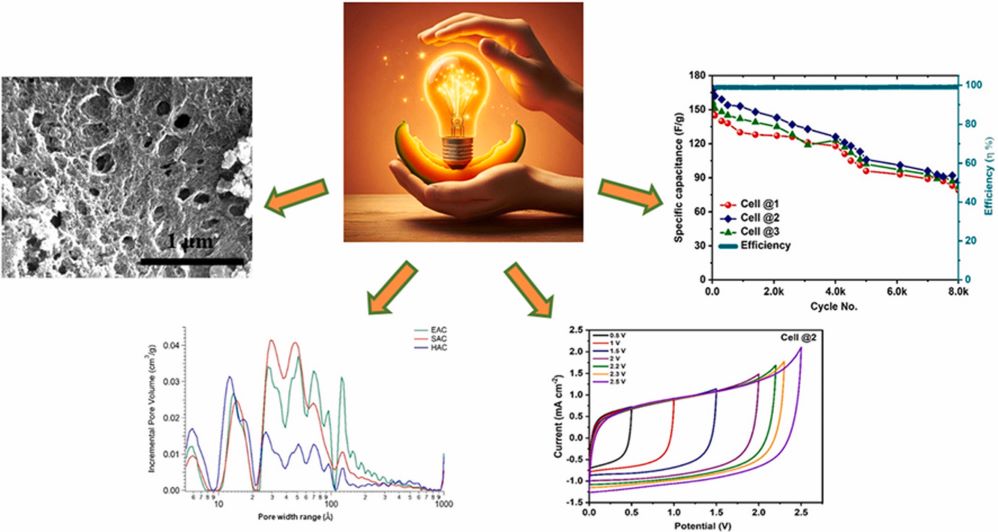Semi-solid-state supercapacitors employing highly porous activated carbon (AC) electrodes are promising, cost-effective, and environmentally friendly energy storage devices with exceptional power performance. In this work, for the first time in literature, we report a comparative study on different pre-treatments made on melon waste starting precursor to produce hierarchical large surface area porous AC. Also, for the first time in our knowledge, a gel polymer electrolyte (GPE) consisting in lithium trifluoromethanesulfonate in ethylmethylimidazolium trifluoromethanesulfonate, with a high ionic conductivity (∼3.3 × 10−3 S cm−1) and a working voltage window of ∼3.9 V vs Ag/Ag+, was used. The supercapacitors were electrochemically characterized with electrochemical impedance spectroscopy, cyclic voltammetry, and galvanostatic charge-discharge tests. The working voltage window of the device was optimized in the range of 0–2.3V. Hydrothermally pre-treated AC-based supercapacitor is characterized by the best performance in terms of capacitance (∼161–170 F g−1), specific energy (29–31.34 Wh kg−1), and power density (839–860 W kg−1) at 1 A g−1. Supercapacitors based on ACs pre-treated via hydrothermal and ethanol soaking outperform devices based on simple chemically/physically ACs in rate performance, while hydrothermally pre-treated AC demonstrates superior stability over 8000 cycles, exhibits initial 15 % capacitance fading and coulombic efficiency close to 99–100 %.
Reproduced with permission. Copyright 2024, Elsevier

